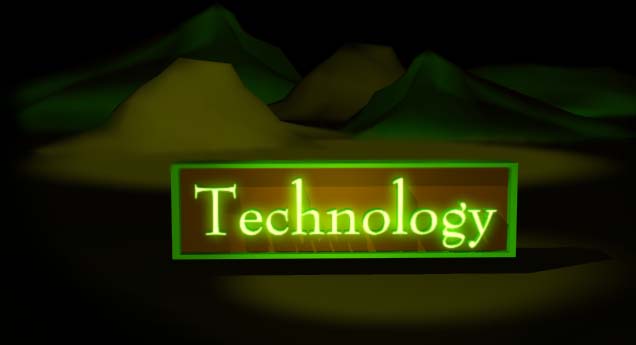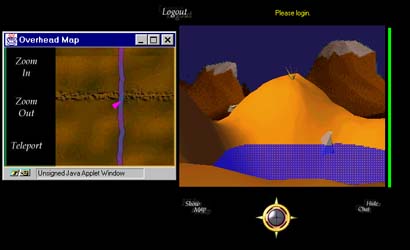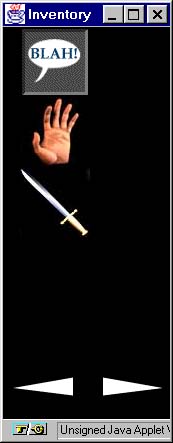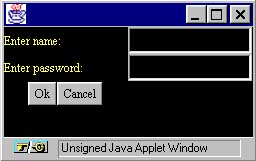
|
It's a game, The Terrible Samaritan is.
That's the form it takes--the form of a game--but the
technology it's built on is the foundation of cyberspace.
Using java to extend VRML 2.0 through its
External Authoring Interface (EAI), Cicada Interactive
has developed a set of protocols and engines which allow
truly infinite, seamless, inter-connected, immersive
universes to be built, for the first time, using nothing
but open internet standards.
|

|
Say you follow a road north to a dead-end in the desert; the ground under your feet doesn't suddenly disappear if you continue walking. You can walk for ten more miles over real terrain, and find a town physically located ten miles north, if there is a town there to be found. |

|
Suppose you find a sword hidden an eerie border abbey and carry it off with you. Suppose, then, that you stop playing for a day or two--when you pick up the game again, you still have the sword, and if you go back to the abbey, it isn't also there. |
What if you take a one-of-a-kind magical gem from a
temple and drop it next to a rock on the bank of a
river, then sign in under a different name and go to that
spot. The gem will be right where you left it. Actions are
persistent.
|

|
|
The Terrible Samaritan is set in a universe whose detail is unrestricted by file-size and dowload time. Scenes are not built from single, or even multiple VRML files, but are composed on the fly from a central repository of unlimited VRML data, containing scenes and objects that are thematically and logically unified by high-level protocols for describing distributed interaction. |